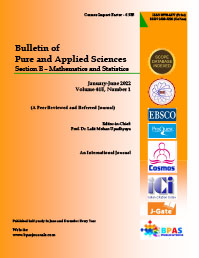Graceful labeling on twig diamond graph with pendant edges ∗
DOI:
https://doi.org/10.48165/Keywords:
Graceful labeling, star graph, diamond graphAbstract
A graceful labeling of a graph G with q edges is an injection f : V (G) → {0, 1, 2, . . . , q} with the property that the resulting edges are also distinct, where an edge incident with the vertices u and v is assigned the label |f(u) − f(v)|. A graph which admits a graceful labeling is called a graceful graph. In this paper, we prove the graceful labeling of a new family of graphs G called a twig diamond graph with pendant edges.
References
Gallian, J.A. (2017). A dynamic survey of graph labeling, The Electronic Journal of Combinatorics, 1–415.
Hoede, C. and Kuiper, H. (1987). All wheels are graceful, Util. Math., 14, 311–322. [3] Kaneria, V.J. and Makadia, H.M. (2012). Journal of Math. Research, 4(1),54–57. [4] Rosa, A. (1967). On certain valuations of the vertices of a graph, Theory of Graphs (International
Symposium, Rome, July 1966), Gordon and Breach, N.Y. and Dunod Paris, 349–355. [5] Sethuraman, G. and Jeba Jesintha, J. (2009). All banana trees are graceful, Adv. Appl. Disc. Math., 4, 53–64.
Sethuraman, G. and Jeba Jesintha, J. (2009). All extended banana trees are graceful, Proc. Inter national Conf. Math. Comput. Sci., 1, 4–8.
Golomb, S.W. (1972). How to number a graph, in Graph Theory and Computing, R.C. Read, ed., Academic Press, New York, 23–37.
